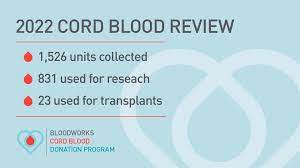Cord blood donation is a remarkable act of altruism, offering the gift of life to those in need. In this article, we’ll explore the significance of cord blood, the process of donation, eligibility criteria, benefits, and much more.
What is Cord Blood?
Cord blood is the blood collected from a newborn’s umbilical cord immediately after birth. It is a rich source of stem cells, which have the unique ability to develop into various blood and immune system cells, making them invaluable for medical treatments.
The Gift of Life: Importance of Cord Blood Donation
Cord blood contains hematopoietic stem cells that can treat a variety of diseases, including leukemia, lymphoma, and certain genetic disorders. This gift of life can potentially save the lives of those battling life-threatening conditions.
How Cord Blood Donation Works
Cord blood donation is a relatively simple and non-invasive procedure that occurs immediately after the birth of a baby. The blood from the umbilical cord and placenta is collected, tested, processed, and then stored under carefully controlled conditions for future medical use.
Eligibility for Cord Blood Donation
Not everyone can be a cord blood donor. Certain health conditions or circumstances may disqualify individuals. Typically, donors need to be healthy, meet age requirements, and have a willingness to donate.
The Donation Process
Once a donor qualifies, the cord blood collection process is straightforward and safe for both the baby and the mother. The collected cord blood is then carefully stored for potential future medical use.
Benefits of Cord Blood Donation
Cord blood donation benefits not only the recipient but also the donor. It offers the unique opportunity to make a lasting impact on someone’s life. Additionally, it can provide peace of mind knowing that cord blood may be available for your family’s potential medical needs.
Public vs. Private Cord Blood Banks
Cord blood can be stored in either public or private banks. Public banks make cord blood available to those in need, while private banks store it exclusively for the donor’s family. Both options have their merits and should be considered based on individual circumstances.
Debunking Common Misconceptions
Cord blood donation is often misunderstood. It is a safe, painless, and non-invasive procedure that does not harm the baby or mother. Clearing up these misconceptions can encourage more donors to come forward.
Real-Life Success Stories
The impact of cord blood donation is vividly demonstrated through real-life stories of individuals whose lives were saved by cord blood transplants. These stories serve as a testament to the power of donation and the hope it brings.
Ethical Considerations
Cord blood donation raises ethical questions, including concerns about commercialization and access. It’s essential to weigh the pros and cons and make an informed choice.
Conclusion
Cord blood donation is, without a doubt, a gift of life. It offers hope, healing, and a brighter future for those in need. Consider becoming a donor or spreading awareness about this life-saving act.
FAQs
1. Is cord blood donation painful for the mother or baby?
No, cord blood donation is a painless and non-invasive procedure for both the mother and the baby.
2. Can anyone be a cord blood donor?
No, not everyone can be a cord blood donor. There are eligibility criteria, and potential donors must meet certain health and age requirements.
3. What is the difference between public and private cord blood banks?
Public cord blood banks make donations available to those in need, while private banks store cord blood exclusively for the donor’s family.
4. How is cord blood used in medical treatments?
Cord blood is used in stem cell transplants to treat various diseases, including leukemia, lymphoma, and immune system deficiencies.
5. What is the future potential of cord blood research?
Cord blood research holds promise for regenerative medicine, offering potential treatments for a wide range of medical conditions.
